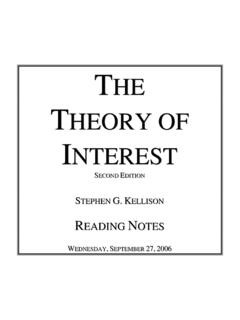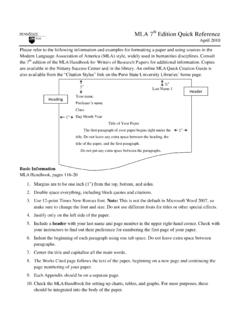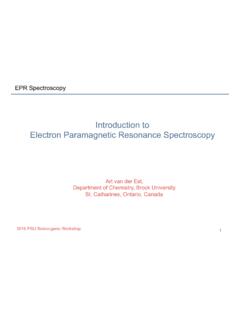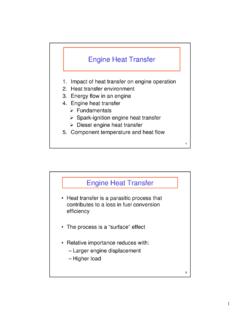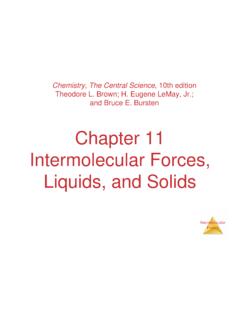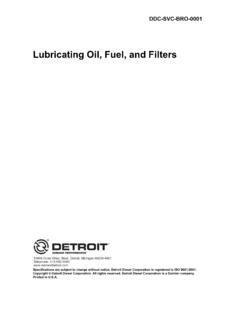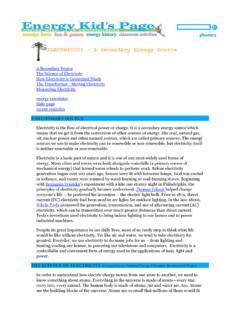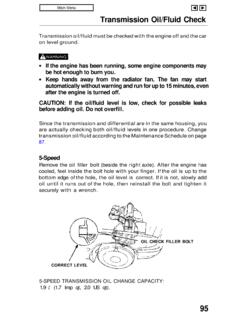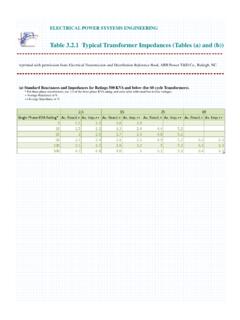Transcription of How Peanut Butter is made T - Pennsylvania State University
1 How Peanut Butter is made O make your everyday Peanut Butter , peanuts are harvested, shelled, roasted, blanched, and grinded up into a delicious creamy paste. Until about the 1920 s, Peanut Butter production was entirely manual. Today, mechanized cultivation and harvesting has vastly improved the efficiency of the production process. About 250,000 jars are produced daily, at the largest Peanut Butter plant. This article is going to describe in detail, the manufacturing process of Peanut Butter . Raw Materials After production, about 90% of Peanut Butter consists of peanuts that have been carefully selected by the farmer, roasted, blanched, and ground. Furthermore, each 500 gram jar of Peanut Butter could contain about 1100 nuts. Other ingredients such as salt ( ), hydrogenated vegetable oil ( %), dextrose (2%), and corn syrup (2%) are added to the product to improve smoothness, spreadability, and flavor.
2 T The Manufacturing Process Planting and Harvesting of peanuts Peanuts are planted in April or May and harvested in September. The Peanut grows as a plant that blooms yellow flowers. The flower petals wilt after a period of time and signal the underground growth of the nuts. During harvesting, peanuts are removed from vines by portable mechanical pickers and are delivered to warehouses for cleaning. During the cleaning process, blowers remove dust, sand, vines, stems, leaves, and empty shells. Shelling Shelling is the process of removing the outer covering of the nuts. During this procedure, peanuts are passed between a series of rollers that crack them. The cracked peanuts are then repeatedly passed through Figure 1 The yellow flowers bloom, then shrink and the peanuts begin to grow at the roots in the soil. Figure 2- Peanuts in their shells and after the shelling process.
3 Screens, blowers, magnets, and destoners. There, they are shaken, gently tumbled, and air blown, until all the shells and rocks are removed. After shelling, the peanuts are graded for size, color, defects, and broken skins. The peanuts with defects are discarded while the healthy ones are packaged and ready for processing. Dry Roasting Dry Roasting is a process by which heat is applied to dry foodstuffs without the use of oil or water as a carrier. During roasting, the peanuts travel through a hot air roaster, in a continuous rocking motion. This motion allows the nuts to roast evenly. A photometer indicates when the cooking is complete and after this process, the color of the peanuts change from white to light brown. Cooling Peanuts have to be rapidly cooled to stop the cooking process. This helps them to retain moisture and oil, preventing them from drying out.
4 For cooling to occur, the hot peanuts are passed directly from the roaster to a perforated metal cylinder, where a Figure 3- Dry roasting of peanuts. Figure 4- Peanut s color change from white to light brown after roasting. Some of the skin of the nuts also peels off. large volume of air is pulled through by suction fans. The peanuts are brought to a temperature of 30 degrees Celsius. Blanching Blanching removes the remaining outer skins of the peanuts that still remain after roasting by rubbing them through rubber belts. In this process, the kernels are also split in two, and the heart of the peanuts are removed because they have a bitter taste to them. Finally, the blanched nuts are mechanically screened and inspected on a conveyor belt to remove scorched or rotten nuts. Grinding After blanching, a grinder grinds the peanuts into a paste while incorporating other ingredients.
5 Peanut Butter is usually made by two grinding operations. The first reduces the nuts to a medium grind, and the second to a fine, smooth texture using a very high-speed comminutor. This machine s combination action of shearing and grinding, transforms the hard peanuts into a smooth paste. As peanuts are being fed into the grinder, about 2% salt, hydrogenated vegetable oil, dextrose, and corn syrup are added to the mixture. Figure 5- The peanuts are being inspected by the workers, who remove the defected nuts. Figure 6- The peanuts are reduced to a medium grind first, then into a fine, smooth texture. Hydrogenated vegetable oil acts as a stabilizer, which prevents the oil from collecting at the top of the Peanut Butter jar. Grinding causes the temperature of the Peanut Butter to go up to 60 degrees Celsius. For this reason, the paste would have to be cooled to 38 degrees Celsius after mixing.
6 Throughout the grinding process, peanuts are kept under constant pressure to prevent the formation of air bubbles, which could cause oxidation. Reducing oxidation increases the shelf life of the Peanut Butter because a lower oxygen content makes it more difficult for bacteria to thrive and cause spoilage. Furthermore, after grinding, the Peanut Butter is considered de-aerated, stabilized, and ready for packaging. Packaging During packaging, the newly formed Peanut Butter is delivered into jars in a continuous stream under even pressure. Once again, to prevent oxidation, manufacturers use vacuum packing when the Peanut Butter jars are being sealed. After it is put into final containers, the Peanut Butter is allowed to remain undisturbed until it is completely crystallized. Jars are then labelled, placed in cartons, and stored until they are ready to be shipped out to wholesale institutions or customers like yourself!
7 The process of making Peanut Butter is a long, but easy step-by-step process. First, the peanuts are planted and harvested. Then, they are shelled and dry roasted. Next, they go through a cooling and blanching process which gets the nuts ready for grinding. Lastly, the peanuts are grinded and packaged into jars. Figure 7- The packaging of Peanut Butter . In the United States, the production and consumption of Peanut Butter , has been increasing per year. Hence, the quality of peanuts continues to improve and more advanced methods of creating Peanut Butter are being formulated. Sources Images Figure 1 ,%2 BPeanut%2 Bbutter%2 Bfruit%2B(5).jpg Figure 2 Figure 3 Figure 4 Figure 5 Figure 6 Figure 7 Others



